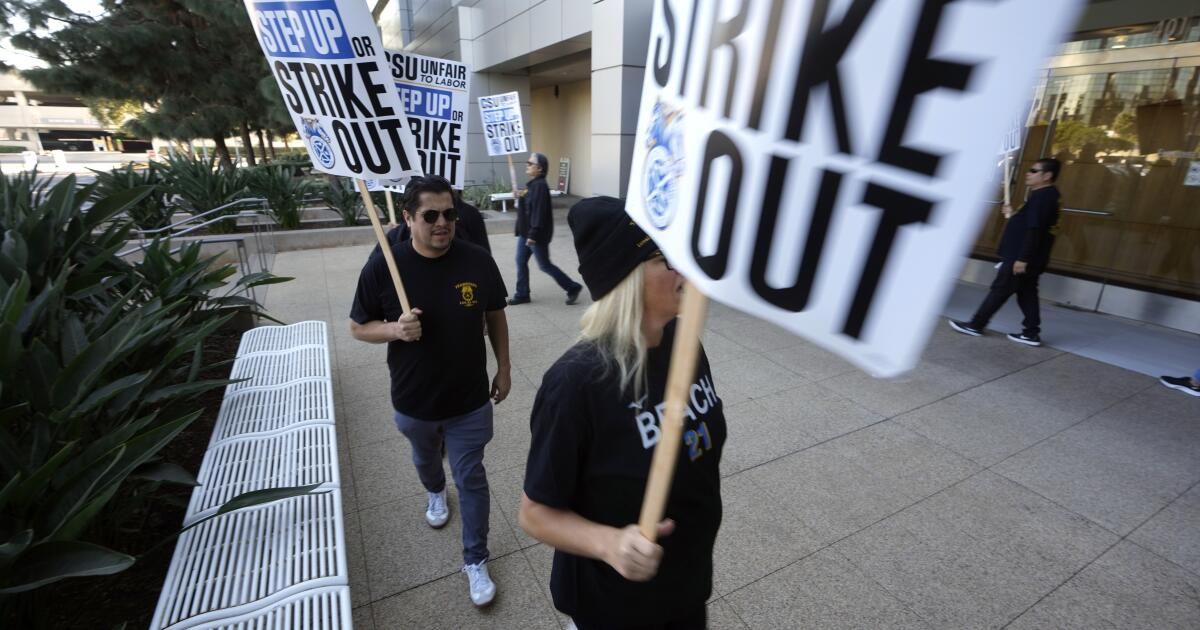The union representing California State University faculty is set to launch a strike across the system's 23 campuses, citing the university's unwillingness to raise salaries by 12%, expand parental leave, reduce workload and more. Unfortunately, however, the union's demands could unintentionally harm the people they are intended to help.
My experience as former chair of the Department of Justice Studies at San Jose State taught me that no proposal comes without a cost. The question is who will bear the greater burden, the students or the teachers?
Let's start with the proposed wage increase that covers approximately 29,000 employees. The union maintains that a 12% increase is necessary to keep pace with inflation and community college salaries.
But according to CSU, such a pay increase would result in $380 million in recurring costs, far more than the $227 million in annual funding dedicated to the system in the last state budget. System officials warned that the proposal “is not financially sustainable…and would result in painful cuts to our campuses, including layoffs.” San Francisco State, which was forced to cut the equivalent of 125 full-time positions and numerous classes due to budget shortfalls, is an example of the potential consequences.
An independent investigation report Likewise, it concludes that a 12% salary increase would be unsustainable for the system. He recommended a 7% increase.
The union's proposal also ignores established economic theory and research on wage growth, which shows that higher labor costs are often passed on to consumers (in this case, students) and employees in the form of reduced hours and other measures.
Cost-cutting often disproportionately affects vulnerable employees, such as part-time teachers. These teachers have the least job security and are the most susceptible to budget pressures. As the cost of labor increases, administrators frequently turn to cost-cutting measures, such as increasing workload and focusing on low-enrollment courses, leading to course cancellations, loss of medical benefits, and layoffs of part-time teachers. A union leader in San Francisco He lamented that “more than 300 teachers are about to lose their jobs and health care due to cuts.”
Another group that will likely be affected by rising college costs are students. Faculty salaries and benefits are the university's largest expense, with each percentage point increase costing the system about $55 million. If the union's proposals prevail, tuition is likely to rise and students will suffer for it. Too many CSU students are already struggling to pay for tuition and housing.
Full-time professors will not escape the impact either. While they may initially benefit from higher compensation, administrators can cut expenses such as training and exemptions from teaching duties to conduct research. The result would be more crowded courses, less research time, and fewer professional development opportunities.
The union's proposals should also be evaluated in the context of declining college enrollment nationwide and in California. Several CSU campuses have missed enrollment goals by 10% or more, CalMatters reported, and the system lost more than 27,000 students in two years, equivalent to a $162 million shortfall.
I hope system administrators and the union will consider some other ways to balance the budget while improving working conditions:
Recalibrate administrative staff and salaries: The number of university administrators has it shot itself since the 1970s. The number and remuneration of new administrative positions must be limited.
Allow higher workloads: The union's rigid stance on this issue leads campuses to hire multiple faculty members to address specific needs. Allowing professors to teach one or two additional courses is a cost-effective alternative.
Award salary increases based on cost of living: A uniform 12% wage increase, regardless of housing and other costs, in different regions would be illogical. Does it make sense to give the same raise to teachers in San Jose and, say, Bakersfield, where costs are dramatically lower?
Cuts are already happening in the state of San José. If the union is successful, I fear more will come.
Since the CSU has already agreed to a 5% salary increase, perhaps we should hold off on these costly lawsuits until we address the enrollment shortfall, restore student confidence in the value and price of a degree, and increase public support for higher education.
Claudio Vera Sánchez is a professor and program coordinator at San José State University.












